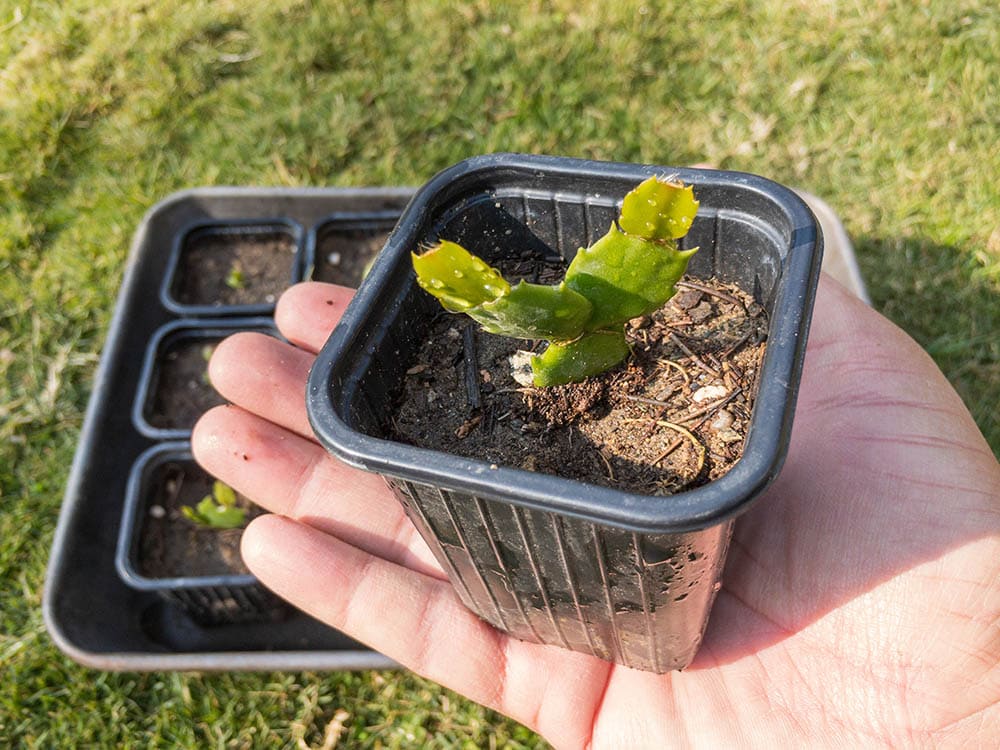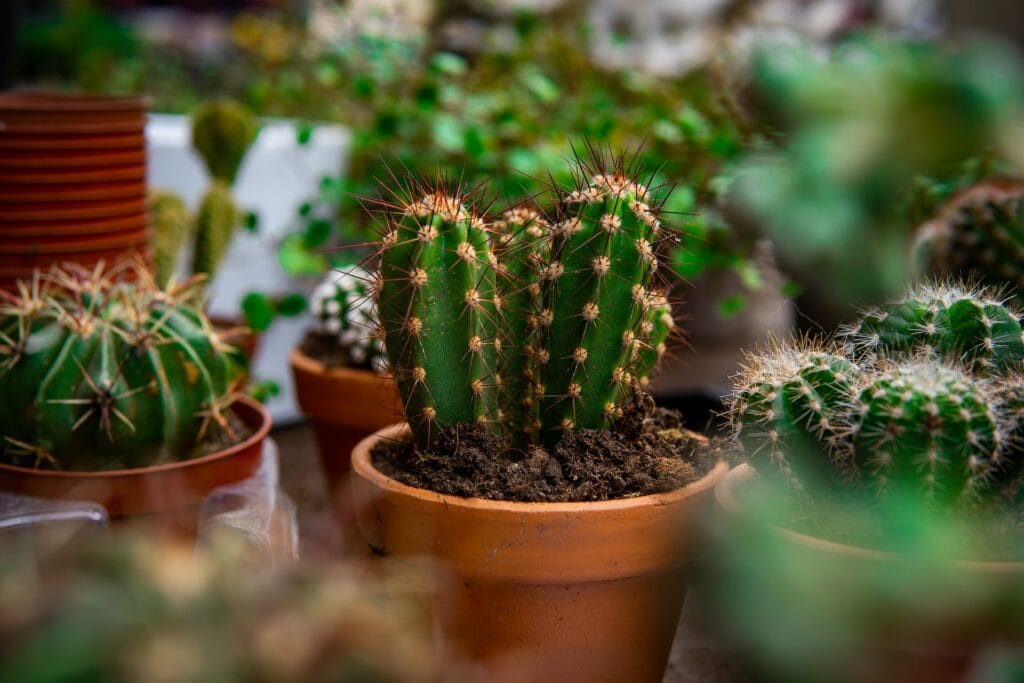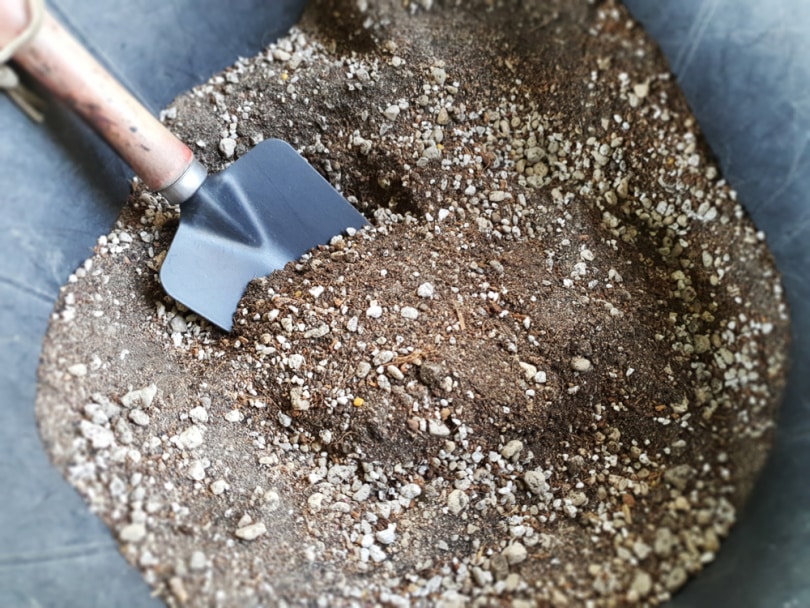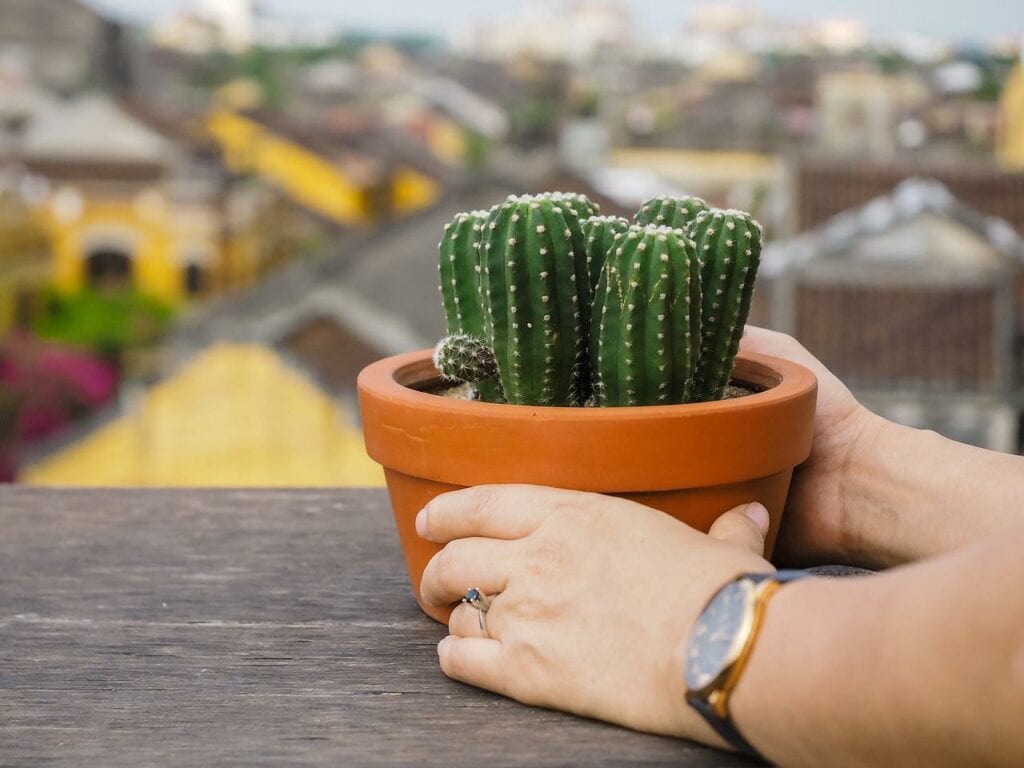How to Make Cactus Soil: Step-by-Step Guide & Care Tips
-
Shea Cummings
- Last updated:

Cacti have specific soil needs due to their natural environment. A cactus stores water in its stem because it is used to going for long periods without rain in the desert where it comes from. Because of this, cactus roots cannot handle sitting in water. This works great in the desert where the soil is very sandy, and when it rains, the water soaks in quickly.
In contrast, these soil needs are an issue when you plant them in your backyard garden or pot unless you use the proper soil. Commercial options are available if you don’t want to spend the time or effort on making your own soil. However, you’ll usually be able to make it cheaper, and it’ll be higher quality because you can control the ratio of ingredients.
Before You Start
Before you get going with this DIY project, there are a couple of things you should know:
1. Determine Soil Needs
Each cactus species has different needs. You can easily make an all-purpose cactus soil mix that will meet most cacti’s basic needs. However, if you want to give your plant the best chance with soil, a little research into its specific needs will help you modify the recipe.
2. Pay Attention to Soil Texture

Many plants have specific soil needs, including their texture. Cacti are especially sensitive to the texture and composition of the soil. Even between various species, their needs may vary a bit. Again, some research at this stage goes a long way.
3. Test pH Levels
While most plants thrive in soil with pH levels ranging from 6.0 to 7.0, most cacti need slightly more acidic soil at 5.0 to 6.0. One exception to this rule is button cacti, which need more alkaline soil at a 6.5 to 7.0 pH level.
Common Cactus Soil Ingredients
There are a variety of ingredients one can use to make their own potting soil.
- Potting soil: You don’t need to go crazy with the potting soil. As long as it’s of decent quality and loose and airy, it’ll do its job.
- Coarse sand: One of the key ingredients in creating soil that drains really well is sand. Remember that you want to use coarse sand to maximize its effect.
- Perlite: If you’ve ever seen potting soil with little white chunks that almost look like styrofoam, you’ve seen perlite. This organic addition to the soil prevents the soil from compacting and further improves drainage.
- Peat (optional): Once you’ve mixed your soil, if you find that the pH level is too high, you can add a bit of peat moss to increase the acidity.
- Gravel (optional): Coarse gravel, like ¾ crush, is another excellent option to increase drainage and airflow. You can also use chunks of lava rock for the same effect.
- Charcoal (optional): Adding charcoal to your cactus potting soil mix is a great conditioner. It will absorb impurities in the soil and help prevent diseases from attacking your cacti.

Cactus Soil Mixture
Unless your cactus needs something specific, a 3-3-2 ingredient mixture is a good all-purpose soil mix:
- 3 parts: potting soil
- 3 parts: sand, gravel, lava rock, etc.
- 2 parts: perlite
The Step-by-Step Guide to Make Cactus Soil
1. Wet the Soil
Before mixing, you’ll want to ensure the potting soil is moist. This prevents dust from puffing up as you mix. Plus, it will make it a little easier to mix.
2. Mix Soil and Sand

Once the soil is wet, combine it with equal parts of sand. This is also when you want to add the gravel, lava rock, or any other drainage helpers you’re adding.
3. Mix Soil Thoroughly
Using your hands is the easiest way to do this. You want to ensure that the potting soil and sand are completely mixed. Generally, this takes around 7 minutes of mixing by hand.
4. Add Perlite and Mix Again

After you’ve got a good mix, add your perlite. Now is the time to do it if you’re adding charcoal or anything else. Mix the soil again for around five minutes, and you’ve got a batch of DIY cactus potting soil.
5. Test Soil
If you’re able and want to take the extra time, you can test the soil’s pH level at this point. Then you can add any necessary ingredients to make it ideal. For example, peat moss will help if the soil isn’t acidic enough.
Difference Between Cactus Soil & Regular Potting Soil
If you’re thinking of using regular potting soil for your cacti plants, think again. While these soils have a fair amount in common, and you’ll want regular potting soil as part of your cactus potting soil recipe, there are some important differences between the two.
The most notable difference between cactus soil and potting soil is how much water it retains. Potting soil retains more water for a longer period compared to cactus soil. While this is great for many plants, it’s terrible for cacti and quickly leads to root rot.
But not only does the right cactus soil help ensure the right amount of water reaches the roots, but it also helps with aeration. Potting soil is denser than cactus soil, and cacti need the extra air for their roots to grow and thrive.
These might seem like small differences, but it’s the difference between a thriving cactus plant and one that dies after just a few weeks!

Cactus Care Tips
Here are a few basic care tips once you plant your cactus in the new soil:
- Easy on the watering: Overwatering is one of the most common ways to kill a cactus because they need minimal watering.
- Drainage is key: If you’re using pots to grow cacti, ensure that they have unplugged drainage holes, so the roots don’t sit in water and rot.
- Replant when needed: As your cactus grows, it may begin to outgrow its pot. If the roots begin coming through the drainage holes, it’s time to replant. Do this by pulling the cactus out of its pot and gently knocking off excess soil. Then replant it in a suitable pot with fresh cactus soil.
- Add to the soil over time: The organic material in the soil breaks down over time. So, replenishing it as needed is one piece of ongoing plant maintenance if you’re going to be a cacti grower.
•You might also like:What is Arizona’s State Flower and How Was It Decided?
Benefits of Making Your Own Cactus Potting Soil
If you head to a local home improvement or plant nursery, chances are they’ll have some cactus potting soil for sale. And with such an easy alternative out there, why would you want to take the time to make your own cactus potting soil?
The truth is there are multiple advantages to making your own. First, when you make your own potting soil for cacti, you get to control the exact mixture in the soil. This gives you the ultimate control and ability to get the perfect potting soil for your specific cactus.
The other reason so many people make their own cactus potting soil is that it tends to be cheaper, especially if you’re making a lot of it. Moreover, if you already have other types of plants in your home, there’s a good chance you already have many of the ingredients you need to make it yourself.
Conclusion
Mixing your own cactus soil is a great way to save money on high-quality soil. In addition to that, there’s something about a DIY project that gives you that extra hint of satisfaction with a job well done. And gardening is also one of those things that you truly get better at as you practice. Cacti aren’t hard to grow, but you can always give them a little extra love.
See also: 15 Plants That Can Grow in Sand (With Pictures)
Featured Image Credit; Boyloso, Shutterstock
Contents

